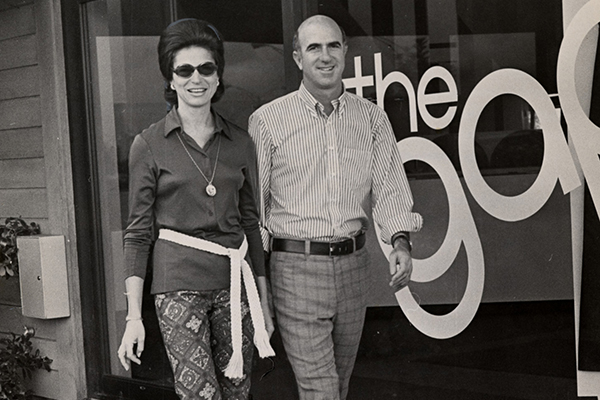Gap
- 22 Aug 2019
- An iconic fashion brand was started 50 years ago. It's still popular, but today it exists in no-man's land between fast- and luxury-fashion.

The Past
Yesterday was the 50th anniversary of Gap. Specifically, the first Gap store opened on 21 August 1969 in San Francisco. It sold Levi’s jeans and music records; the founders, Don and Doris Fisher, were a married couple who had been motivated by Don’s struggle to find proper-fitting jeans for himself. Don was 41 and Doris was 37, though their business catered to teenagers. “The Gap” name is a reference to this “generation gap.”
Fast-forwarding to 1983, Mickey Drexler became the CEO of Gap. He transformed the business, and American fashion, during his tenure. Gap stopped selling Levi’s and other third-party brands. Among other things, the company acquired Banana Republic, formed Old Navy, and introduced GapKids. In the late 90s, Gap surpassed Levi’s as the largest clothing manufacturer in the world. The cool and memorable advertising at the time, which had been done in-house, surely played a part.
Financially, the company peaked in 1999-2000 when its stock price was about $50 per share. Culturally, Gap was a force as well. I’ve already written about some of the memorable commercials that had signalled existing or upcoming trends in fashion, philosophy, and technology. My hometown didn’t have a Gap store while I was growing up, so the brand was somewhat exotic, and yet it was familiar because the commercials were always airing.
The early 2000s was the beginning of the company’s slide. Drexler was fired as the CEO in 2002. By his admission, his ambition to expand Gap was his and the company’s downfall. I stopped paying attention to the brand around this time. The only positive thing that I remember from the 2000s are the 2004 summer commercials that feature the Philip Steir remix of “Summer Breeze” by Seals & Croft.
Despite reports of unethical labor practices and its ill-advised logo change, I still had some appreciation for Gap as a symbol of middle-class respectability. The 2014 “Golf” commercial, directed by David Fincher, definitely put the brand on my radar again. His other commercials for that fall campaign are good and so are the ones directed by Sofia Coppola for the holiday campaign.
The Present
Gap is a go-to brand for me now, though I would compare it to McDonalds. They’re subject to a lot of hate, and yet they’re multi-billion-dollar businesses because a lot of people still like their products. Gap could never be as ubiquitous or successful, though. Fashion is susceptible to short- and long-term changes in the marketplace, and unlike fat and sugar, desire for new clothing isn’t universal.
As a retailer, Gap’s strength is its combination of generational accessibility, middle-class affordability, and American heritage. However, this combination has given way to European fast-fashion. Specifically, Zara and H&M are much more successful because they offer trendier styles and cheaper prices, although they arguably offer lower quality. Gap has also been overshadowed by its younger sibling Old Navy, which caters to fast-fashion demand.
Brick-and-mortar stores will always be needed, and jack-of-all-trade, mid-level retailers such as Gap probably won’t be made totally extinct. There’s always going to be demand for essentials that aren’t too expensive and not too disposable in terms of durability and style. Gap can meet this demand, but its fortunes are tied to whether fast-fashion continues to rule despite the perception of inferior materials and the reality of wasteful production.
The trajectory of the Gap has been a steady rise, then a meteoric one, then a steady fall, and now possibly stagnation. The fact the the brand is so iconic half a century later is worth applauding, even if its best days are long gone and not likely to return. Don Fisher passed away almost 10 years ago and Doris left the board of directors around the same time. Their three sons are on the board, though. Nonetheless, the Fishers’ self-made fortune is inspiring.
Don and Doris created a business that filled a particular gap, no pun intended, and that business became an empire, which was the biggest of its kind at one time. Fortunately, Doris named it “Gap” because otherwise it might’ve been “Pants and Discs.”